
by Vince Chiarelli | Feb 17, 2021 | Uncategorized
Steven Vincent Buscemi was born in the New York City borough of Brooklyn, to John Buscemi, a sanitation worker and Korean War veteran, and Dorothy Buscemi, a hostess at Howard Johnson’s. Buscemi’s father was of Italian descent; his ancestors were from the town of Menfi in Sicily.
The family moved to Valley Stream in Nassau County and Buscemi graduated in 1975 from Valley Stream Central High School along with classmate and future actress Patricia Charbonneau. In high school Buscemi wrestled for the varsity squad and participated in the drama troupe.
Buscemi made his acting debut in the 1985 film The Way It Is, directed by Eric Mitchell and produced by No Wave Cinema. Other early performances include Parting Glances (1986) and Slaves of New York (1988), as well as an appearance in an episode of the television series Miami Vice in 1986. Buscemi received a nomination for the Independent Spirit Award for Best Supporting Male for his role in Mystery Train, released in 1989. In 1990, he played Mink in the Coen Brothers’ Millers Crossing. This was the first of five of the Coen Brothers’ films in which Buscemi performed. Also that year, he starred as Test Tube, a henchman of Laurence Fishburne’s character Jimmy Jump in Abel Ferrara’s crime film King of New York, as well as Edward in the anthology film Tales from the Darkside: The Movie, the protagonist of the “Lot 249” segment of the film.
In 1991, he played a bellboy, Chet, in the Coen Brothers film Barton Fink. His first lead role was as Adolpho Rollo in Alexandre Rockwell’s In the Soup (1992). He gained wider attention for his supporting part as pseudonymous criminal Mr. Pink in Quentin Tarantino’s film Reservoir Dogs (1992), a role that Tarantino originally wrote for himself, and one that earned Buscemi the Independent Spirit Award for Best Supporting Male in his second nomination.[ Also in 1992, he had a guest role as Phil Hickle, Ellen’s father and older Pete’s guidance counselor, in The Adventures of Pete and Pete. The following year, he starred as the eponymous character in the critically panned horror comedy film Ed and His Dead Mother. He also appeared in a cameo appearance in Tarantino’s next film, Pulp Fiction, where he portrays a waiter dressed as Buddy Holly who serves Mia Wallace and Vincent Vega. In 1995, Buscemi guest-starred as suspected murderer Gordon Pratt in “End Game”, an episode of the television series Homicide: Life on the Street. Buscemi was rumored to be considered for the role of The Scarecrow in Joel Schumacher’s proposed fifth installment of the first Batman franchise, Batman Unchained, before Warner Bros. cancelled the project.
The next year, Buscemi again collaborated with the Coen Brothers, starring as kidnapper Carl Showalter in Fargo. Subsequently, he gained a reputation as a character actor, with supporting roles as Garland Greene in Con Air (1997), Rockhound in Armageddon (1998) and Donny in The Big Lebowski (1999). Going into the 2000s, Buscemi continued to co-star in supporting roles. He played Seymour in Ghost World (2001) and Romero in Spy Kids 2: The Island of Lost Dreams (2002), as well as its successor Spy Kids 3-D: Game Over (2003). He also extensively performed voice-over work for animated films, playing Randall Boggs in Monsters, Inc. (2001), — a role he later reprised in its prequel Monsters University (2013) — Mr. Wesley in Home on the Range (2004), Nebbercracker in Monster House (2006) and Templeton the Rat in Charlotte’s Web.
In 2004, Buscemi joined the cast of the television series The Sopranos as Tony Soprano’s cousin and childhood friend, Tony Blundetto, a role that earned him an Emmy Award nomination. Buscemi had previously contributed to the show as director of the third-season episode “Pine Barrens”, which was one of the most critically acclaimed episodes of the series, and the fourth-season episode “Everybody Hurts”. He appeared in episode three of season 6 as a doorman in the afterlife, which is portrayed as a country club in Tony Soprano’s dream. He also directed the episodes “In Camelot”, the seventh episode of season 5, and “Mr. & Mrs. John Sacrimoni Request…”, the fifth episode of season 6. As well, he appeared in the music video for Joe Strummer’s cover version of Bob Marley’s “Redemption Song”.
Buscemi starred in the HBO series Boardwalk Empire starting in 2010, as Enoch “Nucky” Thompson (based on Enoch L. Johnson), a corrupt Atlantic City politician who rules the town during the Prohibition era. He won a Golden Globe Award for Best Actor – Television Series Drama for the role. In 2011 he hosted NBC’s Saturday Night Live.
Buscemi grew up pronouncing his name as boo-SEM-ee, in an anglicized way. In Sicily, where his ancestors are from, it is pronounced as boo-SHEM-ee. He once remarked, “I had to go to Sicily to find out I pronounce my name wrong.”
Buscemi was a New York City firefighter from 1980 to 1984, with Engine Company No. 55, in the Little Italy section of New York. The day after the 9/11 attacks in New York, he returned to his old firehouse to volunteer; he worked twelve-hour shifts for a week, and dug through rubble looking for missing firefighters. On May 25, 2003, Buscemi was arrested with nineteen other people while protesting the closing of a number of firehouses, including Engine 55.
Buscemi married Jo Andres in 1987; they were married until her death in early January 2019. They had one son.
Source
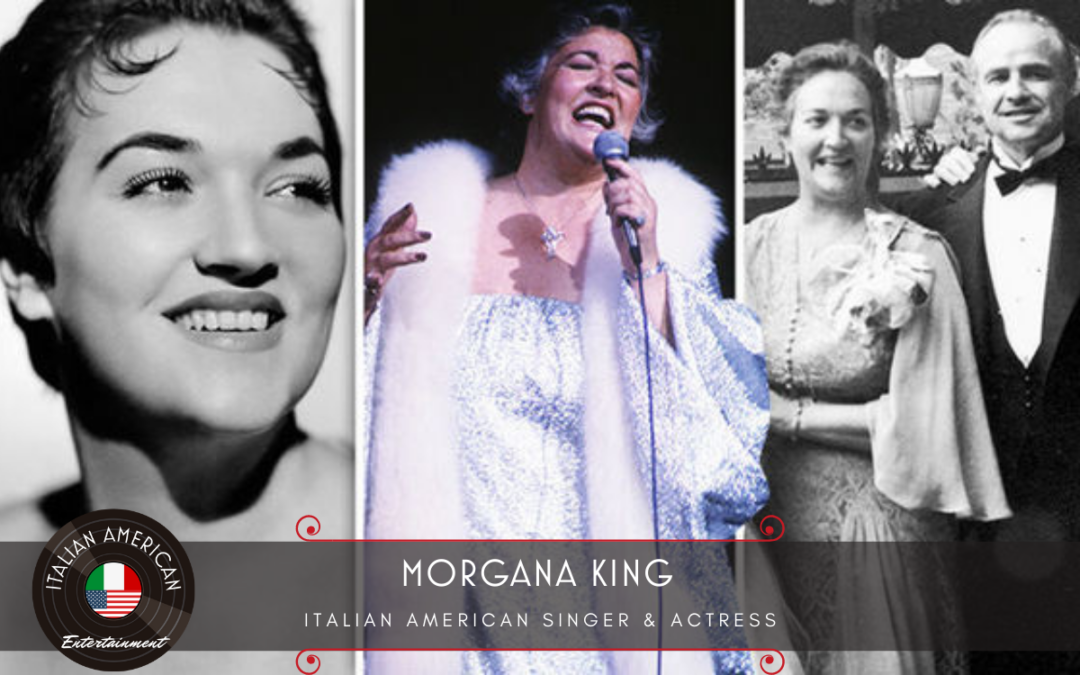
by Vince Chiarelli | Feb 15, 2021 | Uncategorized
Maria Grazia Morgana Messina was born in Pleasantville, New York. Her parents were from Fiumefreddo di Sicilia, Province of Catania, Sicily, Italy. She grew up in New York City with five siblings. Her father, who owned a coal and ice business, played the piano and guitar by ear. Her family experienced a difficult financial period after her father died.
Around the age of thirteen her vocal gifts were recognized when she was overheard singing the aria “I’ll See You Again” from Noël Coward’s operetta Bitter Sweet. At age 16 she developed a love for big bands. A scholarship to the Metropolitan School of Music soon followed.
Her professional singing career began at age sixteen as Morgana King. When she sang in a Greenwich Village nightclub in 1953, a record label executive took an interest after being impressed with the unique phrasing and multi-octave range. Three years later in 1956, her first album, For You, For Me, For Evermore, was released.
In the first appearance of Leonard G. Feather’s Encyclopedia of Jazz (1960), Morgana King stated that her ambition was “… to become a dramatic actress.” She began her acting career in The Godfather, directed by Francis Ford Coppola, as Carmela Corleone, wife of Don Vito Corleone. In the film, she sang the song “Luna mezzo mare”. King appeared as herself in the television documentary The Godfather: Behind the Scenes (1971). She reprised the role in The Godfather Part II (1974), where her character dies aged 62, due to natural causes.
King headlined clubs, concert halls and hotels, and toured throughout the United States, Europe, Australia and South America. Her repertoire contains more than two hundred songs on more than thirty albums. Most of her recordings and re-issues have not remained in the catalogs. In 1964, she received a Grammy Award nomination for Best New Artist. The award went to the Beatles.
Beginning with The Andy Williams Show and The Hollywood Palace in 1964. For more than a decade she performed on television talk and variety shows including The Mike Douglas Show, The Dean Martin Show and The David Frost Show.
King announced her retirement from performing during an engagement at the Cotton Club in Chicago on Friday, December 10, 1993, and added that her recording would not be affected by the decision.
She died, aged 87, of non-Hodgkin’s lymphoma in Palm Springs on March 22, 2018.
King’s voice is notable for its four-octave contralto range. She continued to pursue new forms of expression and presentation by exploring current music trends, which can be heard and read from the list of songs and composers on more than thirty albums. She ventured into new creative areas throughout her career all the while keeping contact with her musical point of origin in jazz. Her distinctive sound has its criticism and detractors.
In literature, the Library of Jazz Standards by Ronny Schiff (2002) recognizes Morgana King as one of the performers who made famous the songs “Imagination” (Van Heusen, Burke), “Like Someone in Love” (Van Heusen, Burke) and “Will You Be Mine” (Adair, Dennis). Also, there is the occasional mention of her in fiction.
Her signature song is “A Taste Of Honey”, originally released on the album With A Taste of Honey (Mainstream Records, 1964). Her most re-issued songs are “My Funny Valentine”, from Everything Must Change (Muse, 1978), and the title track of For You, For Me, For Evermore (EmArcy Records, 1956).
Source
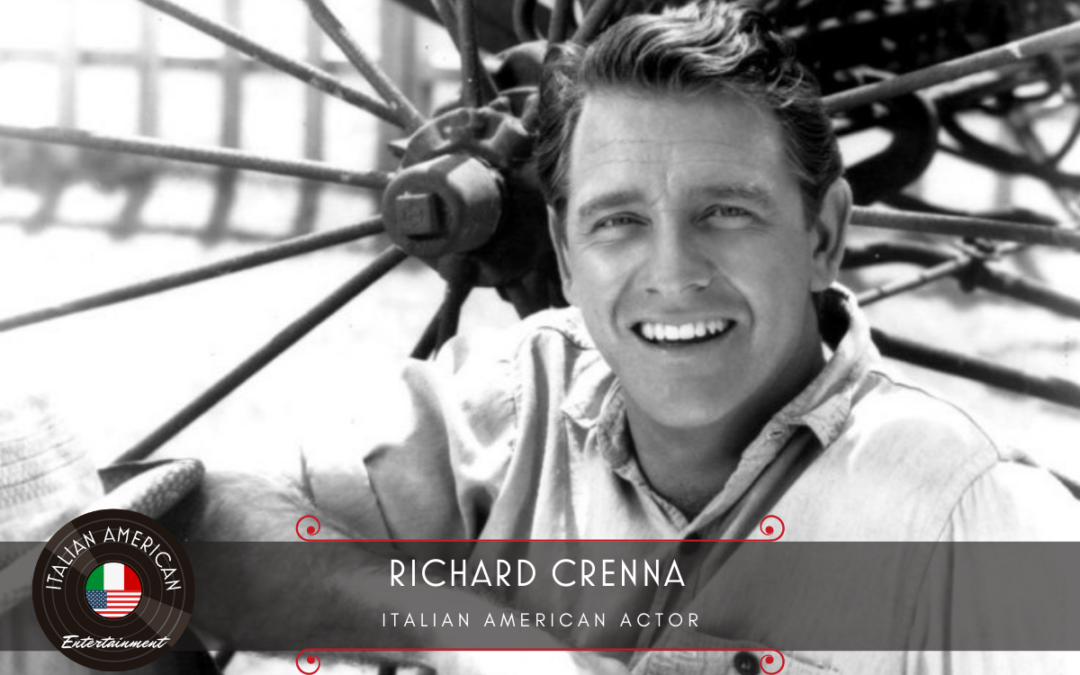
by Vince Chiarelli | Jan 20, 2021 | Uncategorized
Richard Crenna was born November 30, 1926, in Los Angeles, the only child of Edith Pollette, who was a hotel manager in Los Angeles, and Dominick Anthony Crenna, a pharmacist. His parents were both of Italian descent.
Following high school, Crenna served in the U.S. Army during World War II, serving in the infantry as a radioman, where he saw combat in Belgium during the Battle of the Bulge (late 1944 – early 1945). He also briefly served in the Pacific Theater of World War II processing intercepted Japanese radio messages.
After World War II, Crenna attended the University of Southern California, where he earned a bachelor of arts degree in English literature and was a member of the Kappa Sigma fraternity.
Crenna got his acting start on radio. In 1937, he had gained his first role, that of “the kid who did everything wrong” on Boy Scout Jamboree, a show on which he continued to appear occasionally in numerous roles until 1948. In the following year, he started playing Walter “Bronco” Thompson on The Great Gildersleeve, a role he played until 1954. He also originated the role of geeky Walter Denton on the Radio Comedy Our Miss Brooks alongside Eve Arden and Gale Gordon in 1948, and followed that role when the series moved to television in 1952. He remained in that role until 1957. He appeared as a delivery boy in My Favorite Husband (episode “Liz Cooks Dinner for 12”), was Oogie Pringle on A Date With Judy (episode “The Competitive Diet”, among several other episodes of the show) and as a teenager on The George Burns and Gracie Allen Show (episode “Watching the Neighbor’s Daughter”.)
As previously mentioned, Crenna played Walter Denton on radio’s Our Miss Brooks, remaining with the cast when it moved into television in 1952. He remained with the show until it was canceled in 1957. He guest-starred on the I Love Lucy episode “The Young Fans”, with Janet Waldo and on NBC’s 1955–56 anthology series Frontier, in the lead role of the episode entitled “The Ten Days of John Leslie”. In 1955, he was the guest star on The Millionaire in the episode “The Ralph McKnight Story”.
When the Our Miss Brooks TV series was canceled in 1957, Crenna was searching for a new series to showcase his talent. Crenna then joined the cast of the comedy series The Real McCoys, as Luke McCoy – alongside veteran actor Walter Brennan, who played Grandpa Amos McCoy. Kathleen Nolan was cast as his young wife, Kate McCoy. Crenna ultimately became one of the series’s four directors during its six-year run (1957–63).
In the 1960s, Richard Crenna directed many episodes of The Andy Griffith Show and was credited as “Dick Crenna”. He also directed episodes of Lou Grant, which ran on CBS from 1977–82.
Crenna portrayed California state senator James Slattery in the CBS-TV series, Slattery’s People (1964–65). For his acting in this series, he was twice nominated for an Emmy Award with slightly different names: for “Outstanding Individual Achievements in Entertainment” and for “Outstanding Continued Performance by an Actor in a Leading Role in a Dramatic Series”, both in 1965. Crenna was also nominated for a Golden Globe Award for “Best TV Star – Male” for this same role, again in 1965. In 1966, Crenna played beside Steve McQueen as an ill-fated captain of an American gunboat in 1920s China in The Sand Pebbles.
During the 1970s, Crenna continued acting in such Western dramas such as The Deserter, Catlow, The Man Called Noon, and Breakheart Pass. He made a notable performance in Jean-Pierre Melville’s final film Un Flic in 1972. In 1976, Crenna returned to weekly network television in the Norman Lear CBS sit-com All’s Fair, a political satire co-starring Bernadette Peters. Despite high expectations and good critical reviews, it lasted just a single season. The 1978 NBC-TV miniseries, Centennial, based on James A. Michener’s historical novel Centennial, saw Crenna in the role of deranged religious fanatic Colonel Frank Skimmerhorn, who ordered the 1864 massacre of Colorado American Indians.
Crenna won an Emmy Award and a Golden Globe Award for Best Performance by an Actor in a Mini-Series or Motion Picture Made for Television nomination for his performance in the title role of the 1985 film The Rape of Richard Beck.
Crenna then played John Rambo’s ex-commanding officer, Colonel Sam Trautman, in the first three Rambo films, a role for which he was hired after Kirk Douglas left the production a day into filming. Trautman became the veteran actor’s most famous role; his performance received wide critical praise. He also spoofed the character in Hot Shots! Part Deux in 1993.
Crenna was awarded a star on the Hollywood Walk of Fame at 6714 Hollywood Boulevard.
Crenna developed pancreatic cancer and died of heart failure at age 76 on January 17, 2003.
Source
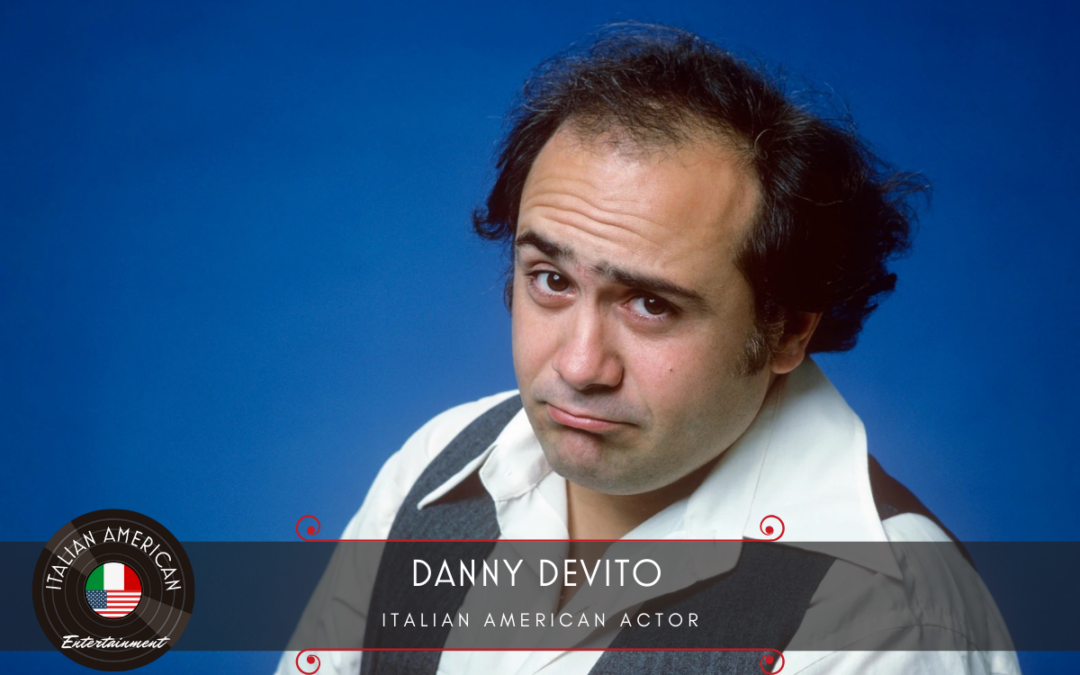
by Vince Chiarelli | Jan 18, 2021 | Uncategorized
Daniel Michael DeVito Jr. was born in Neptune Township, New Jersey, the son of Daniel DeVito Sr., a small business owner, and Julia Moccello. He grew up in a family of five, with his parents and two older sisters. He is of Italian descent; his family is originally from San Fele, Basilicata, as well as Calabria.
When he was 14, he persuaded his father to send him to boarding school to “keep him out of trouble”, and graduated from Oratory Preparatory School in Summit, New Jersey, in 1962. He trained at the American Academy of Dramatic Arts, where he graduated in 1966. In his early theater days, he performed with the Colonnades Theater Lab at the Eugene O’Neill Theater Center in Waterford, Connecticut. Along with his future wife Rhea Perlman, he appeared in plays produced by the Westbeth Playwrights Feminist Collective.
In 1977, DeVito played the role of John “John John the Apple” DeAppoliso in the Starsky & Hutch episode “The Collector”. In 1986, he directed and starred in the black comedy “The Wedding Ring”, a season 2 episode of Steven Spielberg’s anthology series Amazing Stories, where his character acquires an engagement ring for his wife (played by DeVito’s real-life wife, actress Rhea Perlman). DeVito gained fame in 1978 playing Louie De Palma, the short but domineering dispatcher for the fictional Sunshine Cab Company, on the hit TV show Taxi.
After his time on the Taxi series ended, DeVito devoted more effort to a growing successful film career, appearing as Vernon Dalhart in the 1983 hit Terms of Endearment; as the comic rogue Ralph in the romantic adventure Romancing the Stone (1984), starring Michael Douglas and Kathleen Turner; and its sequel, The Jewel of the Nile (1985). In 1987 he made his feature-directing debut with the dark comedy Throw Momma from the Train, in which he starred with Billy Crystal and Anne Ramsey. He reunited with Douglas and Turner two years later in The War of the Roses (1989), which he directed and in which he co-starred.
Other work included the comedies Junior (1994) and Twins (1988) with Arnold Schwarzenegger; playing the villain The Penguin in director Tim Burton’s Batman Returns (1992); and the film adaptation Matilda (1996), which he directed and co-produced, along with playing the role of Matilda’s father, the villainous car dealer Harry Wormwood.
Although generally a comic actor, DeVito expanded into dramatic roles with The Rainmaker (1997); Hoffa (1992), which he directed and in which he co-starred with Jack Nicholson; Jack the Bear (1993); neo-noir film L.A. Confidential (1997); The Big Kahuna (1999); and Heist (2001), as a gangster nemesis of Joe Moore (Gene Hackman).
In 2011, DeVito received a star on the Hollywood Walk of Fame for his work in television.
DeVito has become a major film and television producer. DeVito founded Jersey Films in 1991, producing films like Pulp Fiction, Get Shorty, Erin Brockovich (for which he received an Academy Award nomination for Best Picture), Gattaca, and Garden State. In 1999, he produced and co-starred in Man on the Moon, a film about the unusual life of his former Taxi co-star Andy Kaufman, played in the film by Jim Carrey. DeVito also produced the Comedy Central series Reno 911!, the film spin-off Reno 911!: Miami, and the upcoming revival on Quibi.
Source
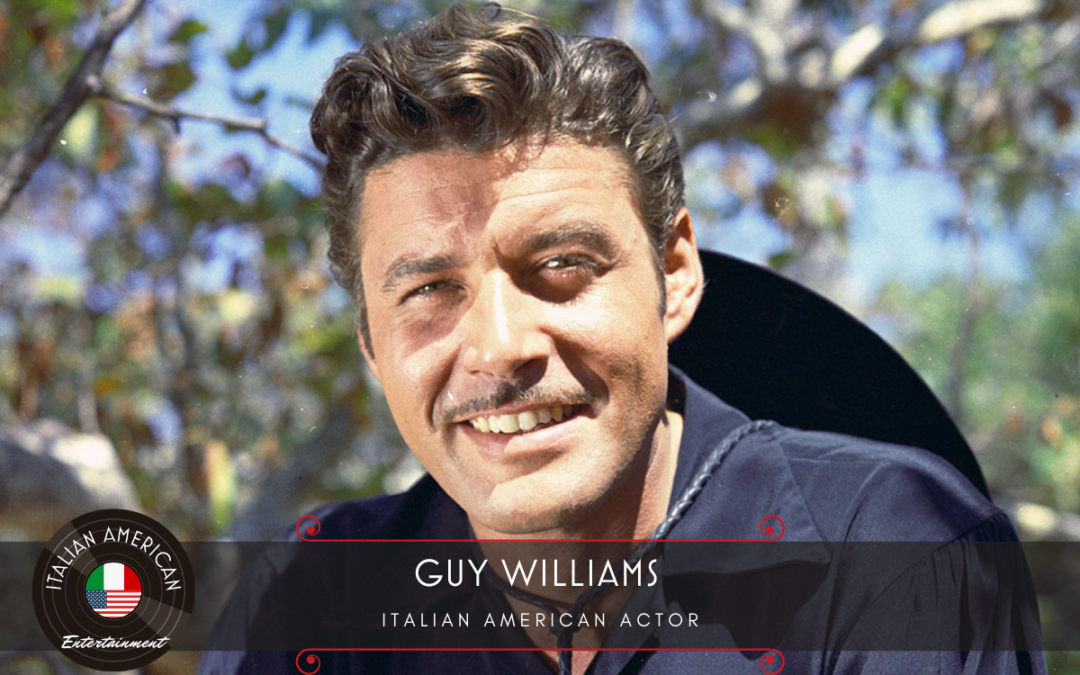
by Vince Chiarelli | Jan 15, 2021 | Uncategorized
Guy Williams was born of Sicilian parentage on January 14, 1924, as Armando Joseph Catalano in the Washington Heights area of New York City. His parents, insurance broker Attilio Catalano and Clara Arcara, were from the island of Sicily, and were by then living in poverty. Attilio was the son of a wealthy timber grower in Messina, who purchased land in New Jersey. Williams grew up in the Little Italy neighborhood of The Bronx.
In Public School 189, Williams stood out in mathematics. Later, he attended George Washington High School, while he occasionally worked at a soda fountain. He then left to attend the Peekskill Military Academy, where he was an enthusiastic student. His interests included American football and chess.
Williams wanted to be an actor, spurred by his good looks and 6’3″ height. When he decided not to continue studying, his mother, who later became an executive of a foreign film company, was disappointed because it was expected that he would follow in his father’s footsteps as an insurance broker.
After working as a welder, cost accountant and aircraft-parts inspector during World War II, Williams became a salesman in the luggage department at Wanamaker’s. While there, he decided to send his photos to a modeling agency. He quickly found great success with assignments resulting in photographs in newspapers and magazines, including Harper’s Bazaar as well as on billboards and book covers. He then adopted the name Guy Williams (1940s).
In 1946, he signed a single-year contract offered by MGM and moved to Hollywood. Williams had a featured role as a pilot in the film The Beginning or the End (1947), about the first U.S. deployed atom bomb. He appeared in only a few films and soon moved back to New York.
In 1948, to advertise cigarettes while skiing, Williams did an extensive filming trip accompanied by Janice Cooper, a John Robert Powers model. During the long photographic sessions, they fell in love, marrying on December 8, just after they returned to New York City. They had two children, Guy Steven Catalano (aka Guy Williams Jr.) and Antoinette Catalano (aka Toni Williams), both became actors.
By 1950, Williams was filming some of the pioneering television commercials in the U.S. His father died in 1951, never to witness his son’s rise to fame. In 1952, Williams obtained a new one-year contract with Universal-International and moved to Hollywood. He also appeared in an episode of the Lone Ranger, playing town sheriff.
In 1953, he suffered a serious accident when he fell from a horse and was dragged over 200 yards, resulting in a long scar on his left shoulder. Because of this he returned to New York to continue acting and modeling there and temporarily abandoned his film career. In 1953, he left Universal and became a freelancer for movies produced by Allied Artists and Warner Brothers.
Early in 1957, Williams appeared twice in the role of Steve Clay in the television series Men of Annapolis, a military drama set at the United States Naval Academy. He also appeared in the Rod Cameron drama State Trooper in the episode “No Fancy Cowboys” about the defrauding of guests at a dude ranch.
About this time, the Walt Disney Company was casting for Zorro, a television series based on the character created in 1919 by Johnston McCulley. To play the main character, the chosen actor would have to be handsome and have some experience with fencing. Walt Disney interviewed Guy Williams, telling him to start growing a mustache “neither very long or thick.” The exclusive contract paid Williams the then very high wage of $2,500 per week. Williams resumed his professional training in fencing with the Belgian champion Fred Cavens (who also trained Douglas Fairbanks, Errol Flynn and Tyrone Power), since the show required sword fights in most episodes. He also took guitar lessons with the famous Vicente Gomez. Guy’s first appearance as Zorro was on the Disney anthology television series “The Fourth Anniversary Show”, wherein he challenged the notion that Zorro was a fictional character.
The series of half-hour episodes debuted on ABC on October 10, 1957. It was an instant hit in the U.S. Seventy-eight episodes were produced over two seasons (1957–1959), and two movies were edited from TV episodes: The Sign of Zorro (1958) and Zorro the Avenger (1959).
In 1962, Williams played Sir Miles Hendon in the Walt Disney’s The Prince and the Pauper, shot in England.
In 1965, Guy Williams returned to weekly television in the popular science-fiction series Lost in Space.
Guy Williams played Professor John Robinson, an expert in astrophysics and geology, who commanded the mission of the Jupiter 2 spaceship, taking his family in a voyage to colonize the Alpha Centauri star system.
After Lost in Space, Guy Williams decided to retire in order to better enjoy his wealth which had been generated by investments in several businesses, buying and selling on the stock market.
When Williams had first visited Argentina in 1973, he was taken by the admiration and fascination the Argentine people expressed for him and his character of El Zorro. In return, Williams fell in love with the culture and people of Argentina. In the late 1970s, he retired, except for personal appearances, to Recoleta, an upscale neighborhood of Buenos Aires.
In subsequent years, Williams also brought to Argentina some of the original cast members of the Zorro series, including Henry Calvin who performed as Sergeant Garcia. Williams even formed a circus (Circo Real Madrid) with the local fencing champion -and later actor- Fernando Lupiz, traveling all over South America (1977).
Later in 1989, while spending solitary months in Argentina, Williams disappeared. The local police searched his apartment in Recoleta on May 6, 1989, finding his body. He had died of a brain aneurysm. Owing to his great popularity in Argentina, his ashes lay for two years at the Argentine Actors’ Society cemetery at La Chacarita Cemetery, Actor Pantheon & Crypt 278. In 1991, in accordance with his wishes, Williams’ ashes were spread over the Pacific Ocean in Malibu, California.
Source
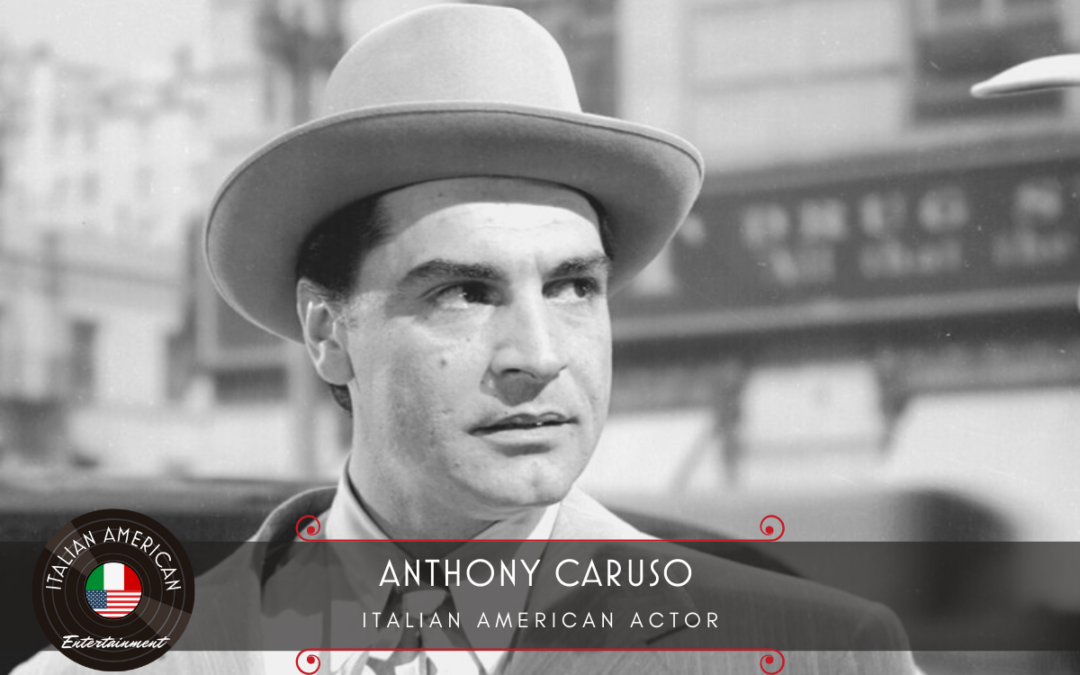
by Vince Chiarelli | Jan 6, 2021 | Uncategorized
Anthony Caruso was born in Frankfort, Indiana, the son of Italian immigrants Anthony Bagarelli Caruso and Augustina Taormina Caruso. When he was ten years old, Anthony and his family moved to Long Beach, California, where he grew up. While acting at the Pasadena Playhouse, he met Alan Ladd, beginning a friendship that continued as they made 11 films together.
He made his film debut in Johnny Apollo (1940). In some of his television roles, Caruso played sympathetic characters, like “Ash”, on an early episode of CBS’s Gunsmoke.
In 1954, Caruso played Tiburcio Vásquez in an episode of the western series Stories of the Century. He appeared in the first Brian Keith series, Crusader. Among Caruso’s other Western credits was 1954’s Cattle Queen of Montana. In 1957, he appeared in the fourth episode of the first season of the TV western, Have Gun – Will Travel titled “The Winchester Quarantine”.
In 1956 Caruso appeared as Disalin with war hero Audie Murphy, Charles Drake and Anne Bancroft in Walk the Proud Land. In 1957, Caruso appeared in episode “The Child” of NBC’s The Restless Gun. In 1959, he was cast as George Bradley in the episode “Annie’s Old Beau” on the NBC children’s western series, Buckskin.
Some of his more memorable roles were that of the alien gangster “Bela Oxmyx” in the classic Star Trek episode “A Piece of the Action”, Chief Blackfish on the NBC series Daniel Boone, Mongo in the film Tarzan and the Leopard Woman, Sengo in Tarzan and the Slave Girl, and Louis Ciavelli (the “box man” or safecracker) in The Asphalt Jungle. Caruso played the comical character of the Native American “Red Cloud” on the 1965 Get Smart episode “Washington 4, Indians 3”.
Caruso died three days before his 87th birthday in Brentwood in Los Angeles, California.
Source






